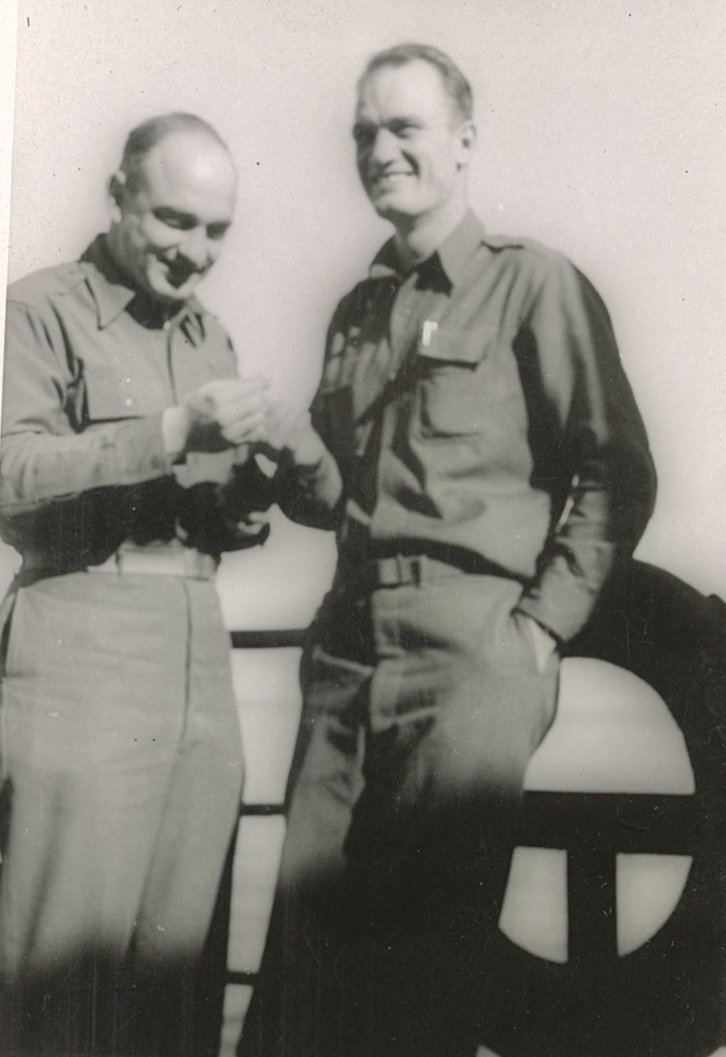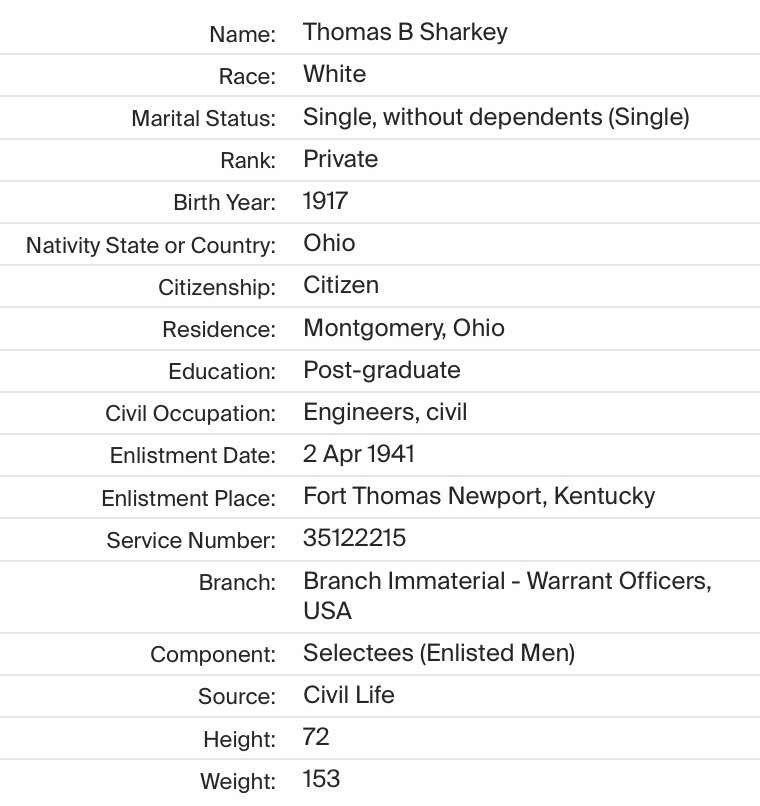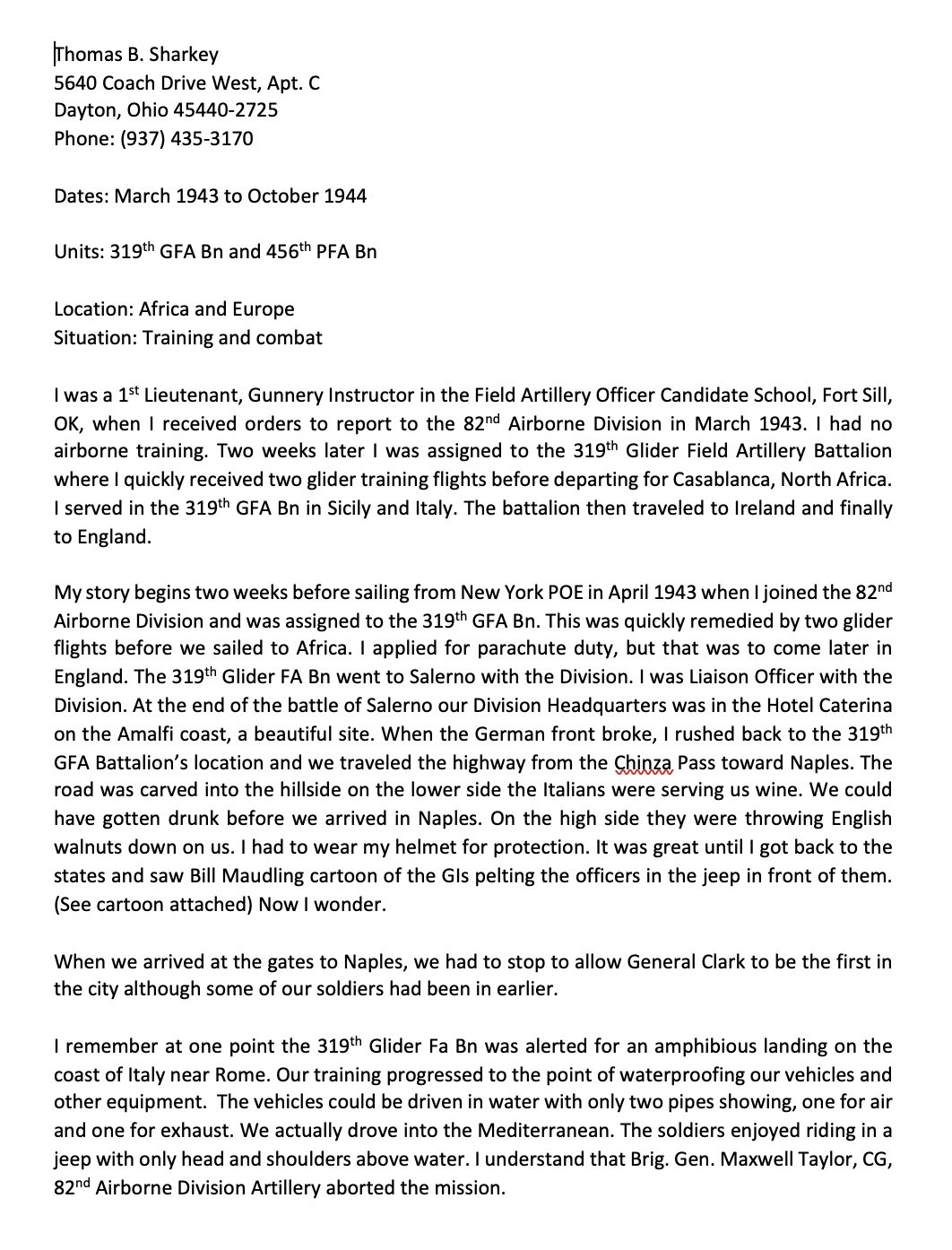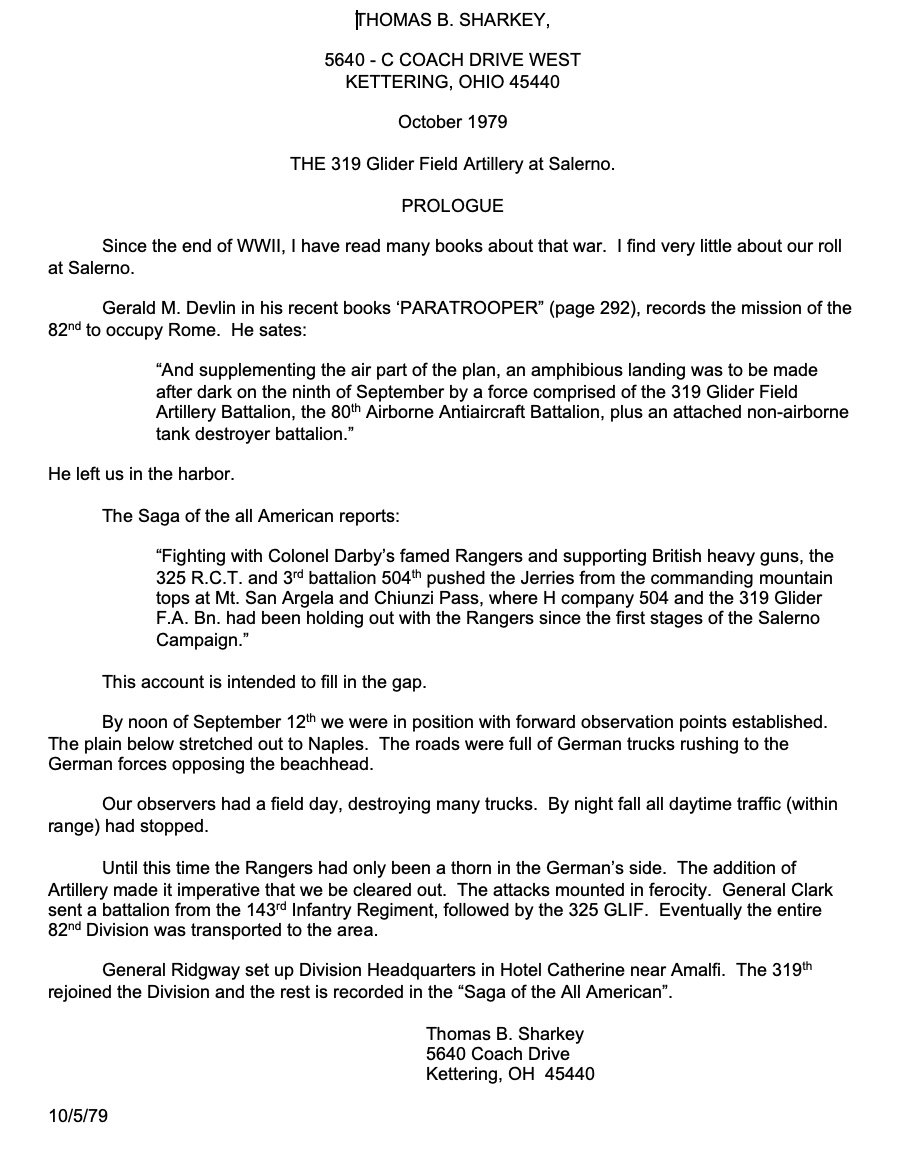Thomas Sharkey
ASN:0-1165953
coming soon









1967 reunion at the Sherman House, Chicago, Illinois - Thomas Sharkey top row, 7th from the right
Thomas B. Sharkey 5640 Coach Drive West, Apt. C Dayton, Ohio 45440-2725
Dates: March 1943 to October 1944
Units: 319th GFA Bn and 456th PFA Bn
Location: Africa and Europe
Situation: Training and combat
I was a 1st Lieutenant, Gunnery Instructor in the Field Artillery Officer Candidate School, Fort Sill, OK, when I received orders to report to the 82nd Airborne Division in March 1943. I had no airborne training.
Two weeks later I was assigned to the 319th Glider Field Artillery Battalion where I quickly received two glider training flights before departing for Casablanca, North Africa. I served in the 319th GFA Bn in Sicily and Italy. The battalion then traveled to Ireland and finally to England.
My story begins two weeks before sailing from New York POE in April 1943, when I joined the 82nd Airborne Division and was assigned to the 319th GFA Bn. This was quickly remedied by two glider flights before we sailed to Africa. I applied for parachute duty, but that was to come later in England. The 319th Glider FA Bn went to Salerno with the Division. I was Liaison Officer with the Division. At the end of the battle of Salerno our Division Headquarters was in the Hotel Caterina on the Amalfi coast, a beautiful site. When the German front broke, I rushed back to the 319th GFA Battalion’s location and we traveled the highway from the Chiunzi Pass toward Naples. The road was carved into the hillside on the lower side the Italians were serving us wine. We could have gotten drunk before we arrived in Naples. On the high side they were throwing English walnuts down on us. I had to wear my helmet for protection. It was great until I got back to the states and saw Bill Mauldin cartoon of the GIs pelting the officers in the jeep in front of them. (See cartoon attached) Now I wonder.
When we arrived at the gates to Naples, we had to stop to allow General Clark to be the first in the city although some of our soldiers had been in earlier.
I remember at one point the 319th Glider Fa Bn was alerted for an amphibious landing on the coast of Italy near Rome. Our training progressed to the point of waterproofing our vehicles and other equipment. The vehicles could be driven in water with only two pipes showing, one for air and one for exhaust. We actually drove into the Mediterranean. The soldiers enjoyed riding in a jeep with only head and shoulders above water. I understand that Brig. Gen. Maxwell Taylor, CG, 82nd Airborne Division Artillery aborted the mission.
In March 1944 after completing jump school in England, I was assigned to Headquarters, 456th PFA Bn located at Camp Market Harborough. I was the Artillery Liaison Officer coordinating artillery support to the 505th PIR. During April 1944, I made two-night training jumps with the Regiment. England was totally blacked out and both nights the sky was overcast – no moon, no stars, no horizon – absolute darkness. We jumped and hoped our parachute packers had done their job well. It was reassuring when I felt the opening shock. This was training for D-Day. Unfortunately, I missed the Normandy operation due to being hospitalized with infectious hepatitis. Then despite the fact I had volunteered for parachute duty to avoid gliders, I had to ride a glider into Holland. Due to the shortage of glider pilots, I rode in the co-pilot seat. My pilot said if anything happens to me just keep the air speed at 45 mph and you won’t get hurt too bad. A comforting thought. Crossing the North Sea, we observed one glider in the water with several planes circling around them and several boats headed towards them. I hope they were rescued. Flying at 1000 feet we spent about 20 minutes over enemy territory too low for their heavy antiaircraft guns to be effective. Shortly after landing at Groesbeck heavy bombers roared overhead dropping supplies for the Division. On October 3, 1944, I was at the 456th PFA Bn, Fire Direction Center when German artillery found our location. I was wounded and evacuated back to the States thus ending my combat career.









